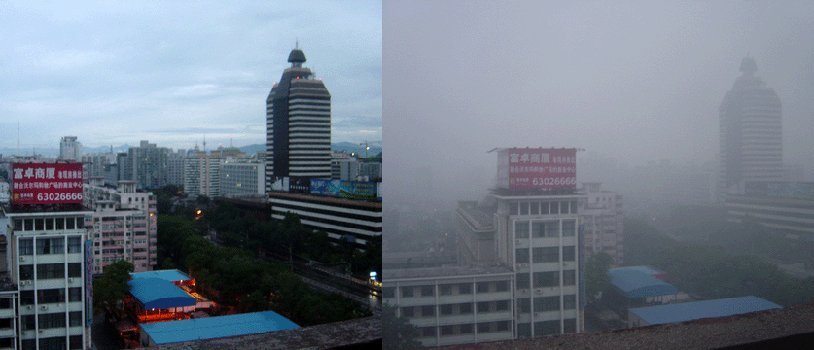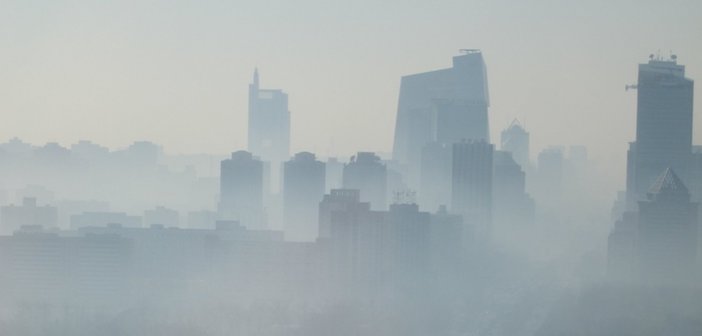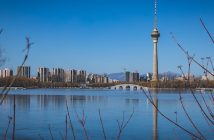After weeks of mostly clear blue skies, haze returned to Beijing this Monday, accompanied by AQI levels reaching over 150 by late morning. This is by no means the worst that capital dwellers have seen, considering the record-breaking Red Alert periods we went through in 2015 and 2016, and Monday’s levels went back down to 100 by early evening, with much clearer skies in the CBD and Sanlitun areas. Nonetheless, it was a reminder that Beijing’s pollution problem persists. And that return to grey horizons might be all the more jarring, given a recent article in Bloomberg (via the South China Morning Post) titled “Airpocalypse over?”
While the Bloomberg piece by no means reached any definitive conclusions, the speculation implied in the headline has left some experts skeptical to say the least, even as those pollution watchers admit that Beijing’s air quality is improving by leaps and bounds. Greenpeace climate and energy expert Wei Huang, for instance, points to how PM2.5 levels have continued to drop from January to July this year by 14.1 percent year on year. She says: “The past few years have seen a huge improvement in air quality, as the government turned the tide on weak standards through better filters and stronger enforcement.”
However, the challenge ahead is not to be underestimated as winter approaches and the cold season brings more pollutive activities such as scattered coal heating, as well as unfavorable weather conditions. The government has already announced this year’s draft winter action plan, with no intention of scaling back measures already put in place in 2017. We can say that air pollution has become a “red line” issue for the municipal and national government, setting Beijing on a track of continuous improvement.
And yet, those improvements are by no means reason to become complacent, according to Tim Buckley, director of energy finance studies at the Institute for Energy Economics and Financial Analysis (IEEFA) in Sydney, Australia. As he bluntly puts it: “It is definitely premature to say China has resolved the issue, not even for just the city of Beijing.”

He adds that “The biggest threat to a return to unmanageable pollution in China is if economic growth is too strong, and too dependent upon central government financial stimulus driving SOE [State-Owned Enterprise] investment in heavy industry and construction.” Buckley surmises that a slower, more sustainable economic growth profile for China in the future will likely involve much less energy-intensive service and consumer-oriented sectors, which, in turn, would lower the energy demand growth profile. “With lower energy growth, zero-emissions and low-pollution electricity sources like renewables, energy efficiency, hydro and to some degree nuclear are better able to meet the incremental growth in electricity demand.”
However, Buckley cautions that if growth is too fast, as has been seen in the last 18 months, China will lean on all such energy sources, including coal-fired power generation. Though he concedes that “China continues to make a transition from its excessive reliance on highly polluting coal to less polluting gas for heating purposes, but this is just an intermediate step, with a need for significantly more building energy efficiency standards and distributed, renewable energy like heat pumps and rooftop solar.”
Wei concurs that recent pollution improvements are reason for further diligence and that there can be no room for resting on laurels. She says this is especially true for Beijing as winter approaches, and colder temperatures require higher energy consumption. “The marginal benefits have begun to diminish as all the lower hanging fruits were picked,” she says, adding: “For megacities such as Beijing, daily consumption of energy, thus, emission of pollutants is unimaginable. So we would only be able to make further progress if such excessive anthropogenic activities could be powered by sustainable and clean energy such as wind and solar, not by fossil fuels such as coal and oil.”
That being said, Buckley is quick to point out that the capital’s recent clean air successes should hearten Beijingers, even as the next step remains steep. He says: “More is definitely needed, this energy system transition will take decades, but China is a world leader, seeing the enormous industry and technology leadership opportunities this is creating. Electric vehicles, both motorbikes, cars, buses, and trucks, and lithium-ion batteries represent just one major area of China’s world leadership.”
Buckley is all the more encouraged because, as he puts it: “Technology convergence means opportunities keep expanding, and China’s government clearly sees this, both for domestic deployment and globally in terms of outbound exports, investment and capacity building in foreign markets.”
As if to summarize, Wei Huang says: “Only the deepening of energy transition could help us to put the bad smog days into the past for good.”
More stories by this author here.
Email: kylemullin@truerun.com
Twitter: @MulKyle
Instagram: mullin.kyle
Photo: Beijing Smog, Asian Correspondent




